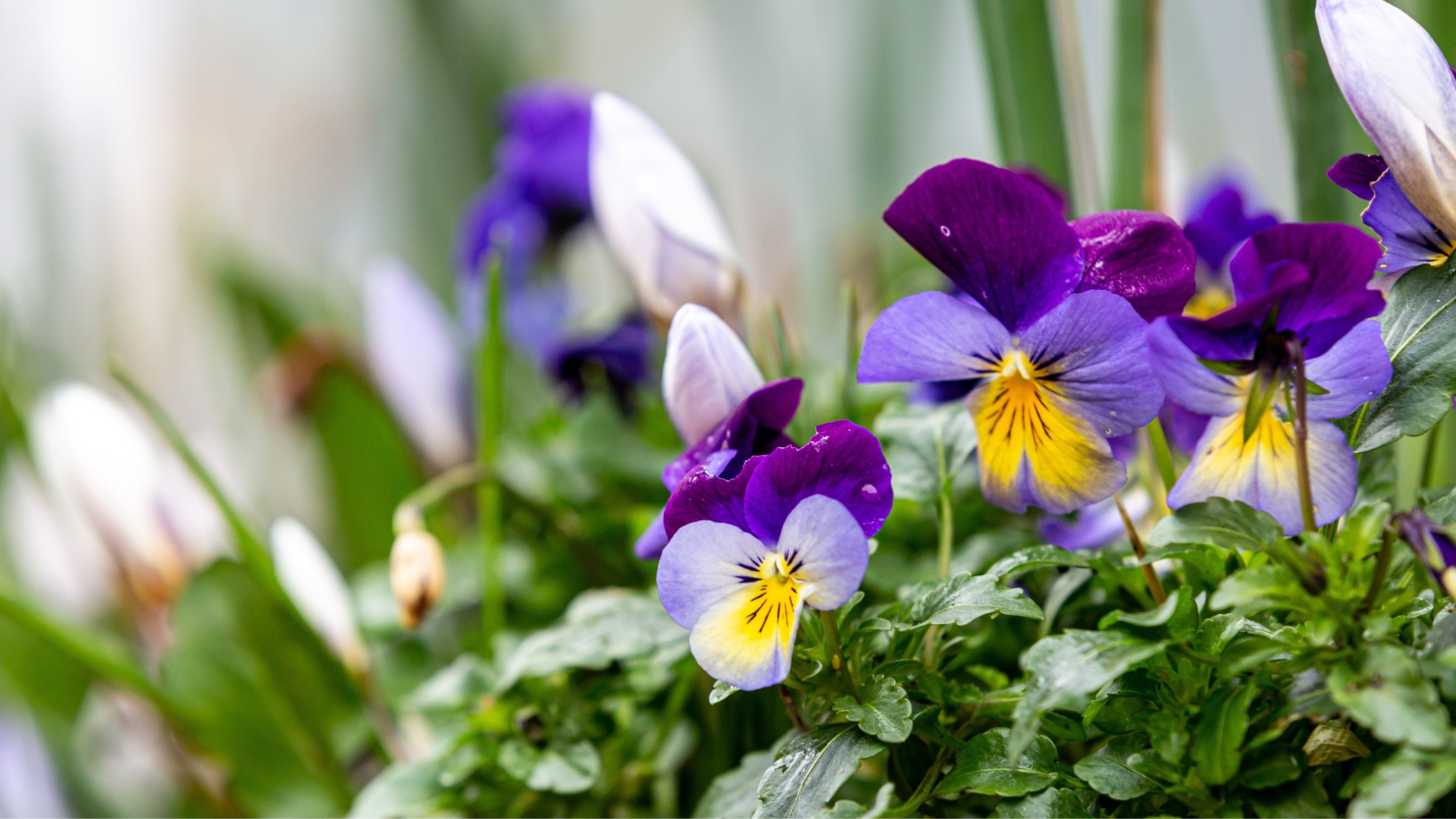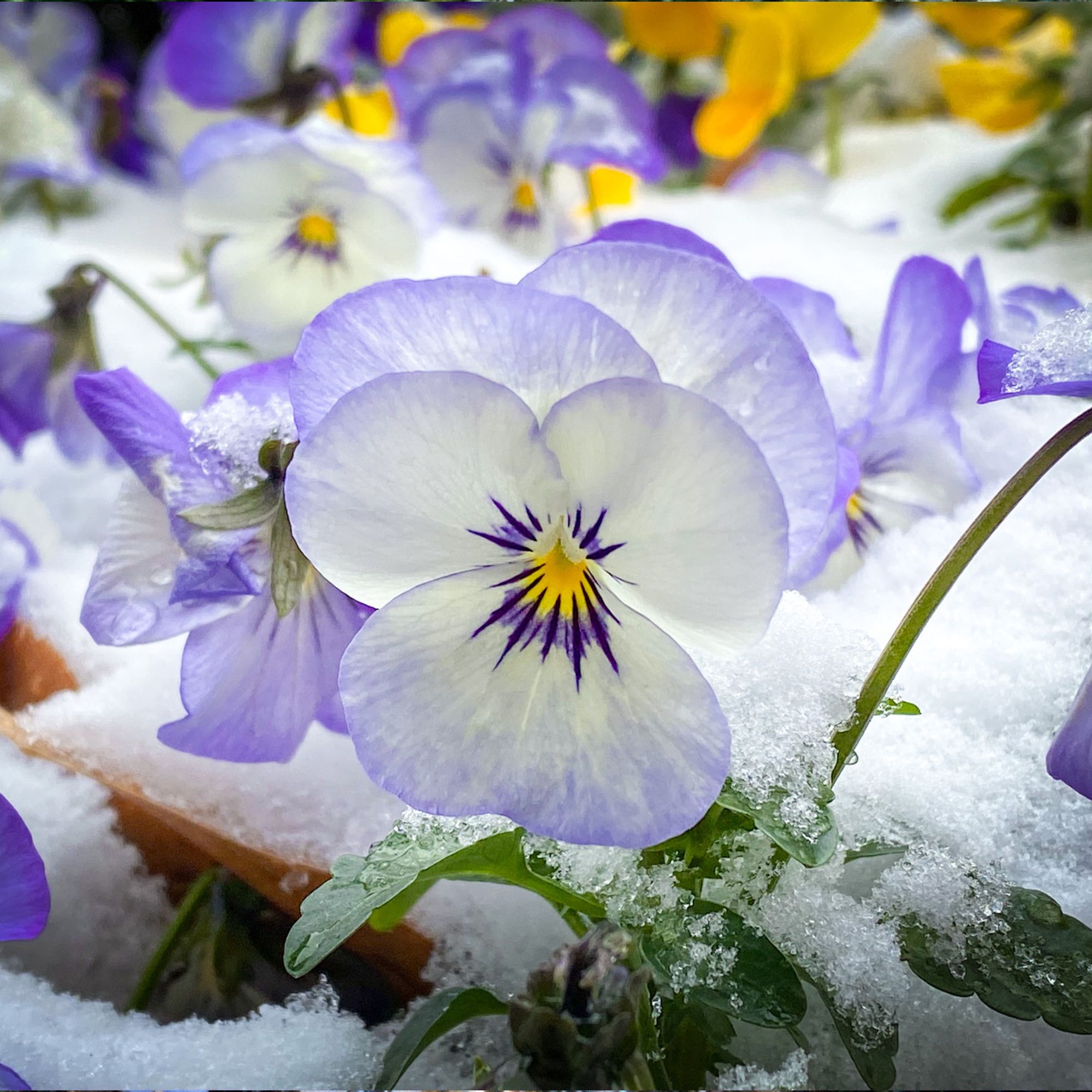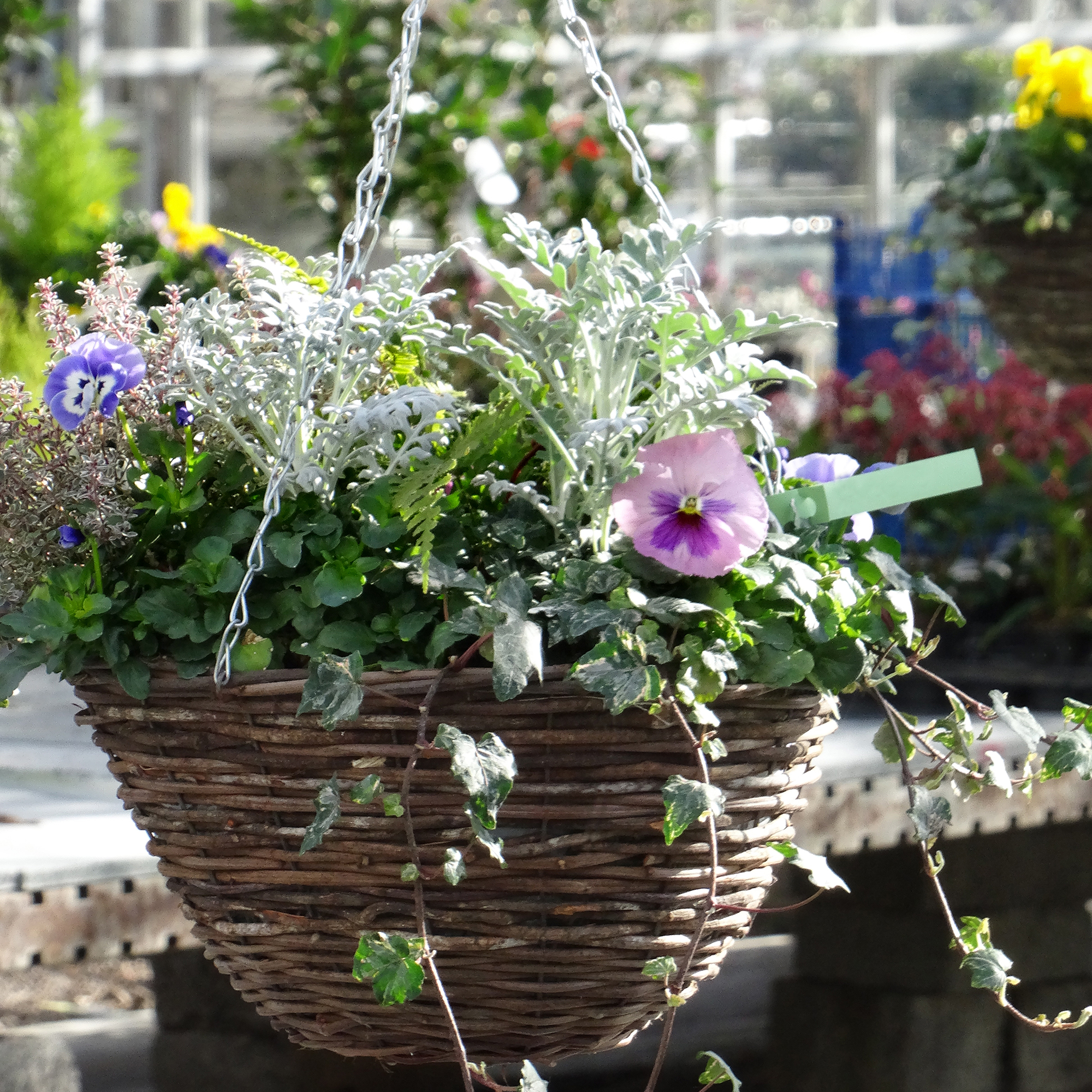How to grow winter pansies for stunning cold-weather blooms
Winter pansies can be planted in borders, pots or baskets, making them suitable for all gardens


Beloved by people everywhere, winter pansies are a wonderful way to transform your outdoor space when it's cold outside. Especially as these humble but oh-so-cheerful winter flowers work just as well in pots and hanging baskets as they do your garden border ideas – making them ideal for gardens and balconies alike.
Better still? It's incredibly easy to learn how to grow winter pansies, which means they're perfectly suited to even the very greenest of gardeners. In fact, the Royal Horticultural Society (RHS) has said that they're a great starter plant for children.
With so many reasons to start growing these hardy little flowers, let's dive on into our how-to growing guide...
How to grow winter pansies
Regularly counted among the best winter flowers for hanging baskets if you want a truly beautiful display, pansies sure do have a lot going for them when the thermostat dips.
'Pansies are hardy annuals that thrive in cool weather,' explains Morris Hankinson, director of Hopes Grove Nurseries, noting that these pretty blooms 'come in a wide range of colours and can tolerate light frosts'.

Morris Hankinson is the founder and managing director of Hopes Grove Nurseries Ltd, the UK’s only specialist grower-retailer of hedging plants, which he established after graduating with a Commercial Horticulture Degree from Writtle College, Essex in 1992.
Monty Don is also a fan of the velvety pansy, noting that these short-lived perennials 'can be treated like annuals and used for bedding to provide the earliest colour, gaily out in the worst weather once the days start to lengthen and, with a little judicious pruning, flowering right into late summer'.
'They are woodland plants and flower best in cool, damp conditions in light or dappled shade ,' he adds via his gardening blog for the Mail Online.
Sign up to our newsletter for style inspiration, real homes, project and garden advice and shopping know-how
Where to buy winter pansies:
- Crocus: a good selection of winter pansies (although our favourite by far is the 'Frizzle Sizzle Blue')
- Thompson & Morgan: try the Pansy and Viola Winter Duo for a sensational display
- Amazon: give the Pansy 'Delta Mix' a go

Winter pansies can be raised from seed sown in June or July, or from plug plants from autumn if you want a vibrant display from December onwards.
However, Monty says that even winter pansies planted from January will do very well and flower for months, so long as you give them a little TLC.
Step-by-step
Here's our easy step-by-step guide on how to grow winter pansies like a pro.
1. Select the right location
Winter pansies will fare best in a sunny or partially-shaded location, according to Christopher O'Donoghue, one of the co-directors at Gardens Revived.
'These little flowers thrive in cooler temperatures,' he adds, 'so make sure you pick an area with good air circulation.'

A gardener with over a decade of experience under his belt, Christopher set up Gardens Revived with his brother, Andrew, in 2018 to create a thriving family business. Together, they have worked on residential gardens, listed buildings and gardens, flower shows and large estates with some exceeding 70 acres – many with historical significance.
2. Prepare the soil
It's important to make sure that you're planting your winter pansies in fertile and well-drained soil.
'Add organic matter, like a good multi-purpose compost, to the ground to improve soil structure,' says Christopher, 'and add horticultural grit if the soil is heavy'.
He advise that you fertilise your pansies once planted, and a second time in spring, to give them all of the nutrients they need throughout their flowering season.
3. Space them well

When you're planting your winter pansies, be sure to dig a hole in the bed or pot that mimics the size of the plant itself – and space them appropriately.
'You're aiming to have a gap of between 6-9 inches between each plant,' says Christopher.
Water them thoroughly after planting.
4. Show them some love
It's a good idea to add a 'layer of mulch on top of the soil to help insulate the roots' of your winter pansies, says Morris.
Mulching won't just work hard to keep your plants warm; it will also help retain moisture and suppress weeds, too. This should help you to achieve your aim of keeping the soil moist but not waterlogged; remember, overwatering is almost always worse for plants than underwatering them.
5. Deadhead regularly

Deadheading is always a vital skill in any gardener's arsenal, and so it makes sense that the same is true when it comes to winter pansies.
'Whenever they are planted you should always pinch out all flower heads,' says Monty.
'This might seem harsh but they will quickly grow new buds and as a result you will have many more flowers that continue for much longer.'
FAQs
What month do you plant winter pansies?
If you're growing winter pansies from seed, it’s best to start them off indoors from June to July in a tray filled with seed compost.
'Pop them on a sunny windowsill or in a warm greenhouse and wait around 14-21 days for them to germinate, before popping your seedlings into individual pots,' says Christopher.
'Just as you would with plant plugs, you can sow your seedlings outdoors in in flower beds, borders, pots, window troughs and hanging baskets around September or October when the soil is still warm. This means you should have fabulous flowers from December onwards.'
if you're late to the planting game, don't worry; Monty says you can still sow winter pansies as plant plugs in December and January. However, they may be less likely to survive a harsh winter, as they may not have time to develop robust roots.
Do winter pansies come back every year?
Winter pansies are short-term perennial plants, but they can last for up to three years if they are properly planted and cared for – although they will deteriorate each year.
'Personally, I prefer to replant my winter pansies each year for a consistent and vibrant display,' says Christopher.
Now that you know how to grow winter pansies, it's time to go forth and transform your outdoor space with an abundance of happy little flowers.
Good luck and happy planting...

Kayleigh Dray became Ideal Home’s Acting Content Editor in the spring of 2023, and is very excited to get to work. She joins the team after a decade-long career working as a journalist and editor across a number of leading lifestyle brands, both in-house and as a freelancer.